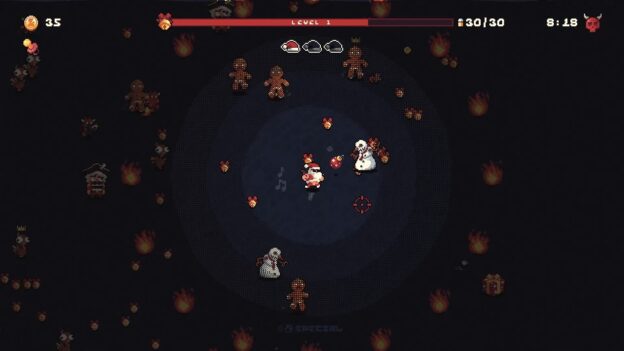Ib Review – Review – Nintendo World Report

Something a lot of people might not be aware of is that there is actually a rather large community built around making horror games in the various versions of the RPG Maker engine. Games like Corpse Party, The Witch’s House, Yume Nikki, and Blue Oni have built themselves small but dedicated fanbases, and another game among that category is Ib. Having originally released in 2012, Ib gained a cult following both in Japan and the west and is considered one of the more influential titles among its peers. Placing you in a surreal and creepy art gallery full of living paintings, this remake of a cult classic handily proves that it’s still got the ability to startle players even now.
In Ib the player takes control of the titular character, a young girl visiting an art gallery with her parents to view the work of artist Guertena Weiss. When she wanders off on her own, she finds herself in front of a strange painting that she does not understand. Suddenly the power in the museum flickers, and Ib finds that everybody else is gone and the doors are now locked. After she is lured into physically entering one of the paintings, she finds herself in the “fabricated world”, a twisted version of the gallery where the paintings have come to life. Some of these paintings are much more hostile than others, and Ib’s health is now attached to a rose that will kill her should it lose all its petals. Ib must explore this fabricated world and find a way to escape, meeting with others who have also found themselves stuck within along the way.
Ib is pretty much your standard adventure game in terms of gameplay. You can interact with objects by pressing A, access your inventory by pressing B, converse with any partners you have at the time with Y, and that’s essentially it in terms of overall input. Movement with the d-pad feels overall fine when using the joy cons but I found the pro controller’s d-pad to make controlling Ib feel kind of jerky and difficult when trying to walk in a straight line. As you explore you’ll find various items that can be used to solve puzzles throughout the world, with many of these puzzles being interesting and effective brain teasers. There are, however, one or two puzzles that feel just a little too trial and error. These aren’t common, but they are noticeable when they occur. That being said, for the most part puzzles have a consistent logic to them and hints can almost always be found if you know where to look.
By far Ib’s most successful aspect is its atmosphere, which genuinely manages to feel creepy and off putting even in the most colorful scenarios. Being chased by one of the gallery’s many painted ladies is something you won’t soon forget, and the game has a masterful use of silence to make sure any noise is enough to catch you off guard. This is also bolstered by a well done soundtrack with a good balance between solemn, creepy, and even sometimes a bit whimsical. The fabricated world itself is also very interesting to explore, with the art of Mr. Weiss being extremely weird and memorable, adding an extra layer of charm to the entire experience. These aspects alone make Ib well worth your time, with the short run time of about 2-3 hours and the presence of multiple endings making it worthwhile to go back and explore again and again afterwards.
Overall Ib proves that it is considered a classic among its peers for a reason, and for the most part it still holds up today. It may still have the issue many of this type of game have, being that anything and everything can hurt or kill you even if it’s not entirely obvious that it will do that, but this is not only not as prevalent as other games I have experienced and is also made less impactful by the fact that you are constantly finding save points as you go. Between the atmosphere, soundtrack, artwork, and characters, if you enjoy creepy experiences Ib is definitely something you should check out. This adventure through art that may or may not have it out for you managed to still find a way to scare and stress me out over ten years after its original release, and honestly I just find that impressive.




